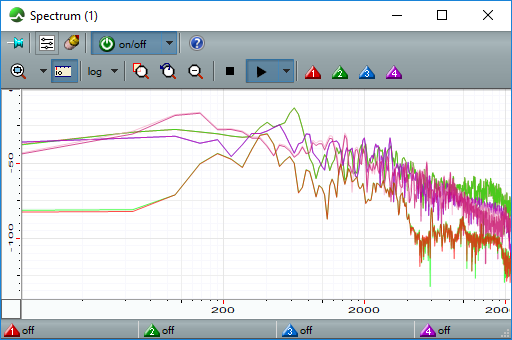Spectrum Analyser

Most audio workstations use FFT spectrum analysers. With frequency bins of equal width across the whole audio spectrum these suffer from very poor resolution at low frequencies and are not suitable for serious audio analysis. For example, an FFT analyser with 1,000 bins operating at 96kHz will have a resolution of, at best, 96Hz. This is more than two octaves at bass frequencies, and is useless for observing low frequency signals or problems such as hums and buzzes.
The CEDAR Cambridge Spectrum Analyser is not an FFT analyser; it is more akin to the analysers found in electronic design laboratories, and it offers a superb resolution of 0.02Hz. This is approximately 5,000 times more accurate than the FFT analyser described above.
It allows you to display the data in four ways that dramatically enhance its usefulness when performing noise reduction, debuzzing, and other restoration tasks:
- Normal mode: a free-running analyser
- Averaging modes: display the average amplitude at each frequency from the moment that you select the mode until you cancel it
- Maximum mode: displays the peak value at each frequency, calculated from the moment that you select this mode until you cancel it
- Minimum mode: holds the minimum value at each frequency, calculated from the moment that you select this mode until you cancel it
With additional facilities such as Select and Zoom, the ability to measure the difference in gain and frequency between two points on the screen, linear and logarithmic displays, and CEDAR's unique Markers that let you transfer frequency information between CEDAR Cambridge processes, the CEDAR Cambridge Spectrum Analyser is the most advanced and useful tool of its type.